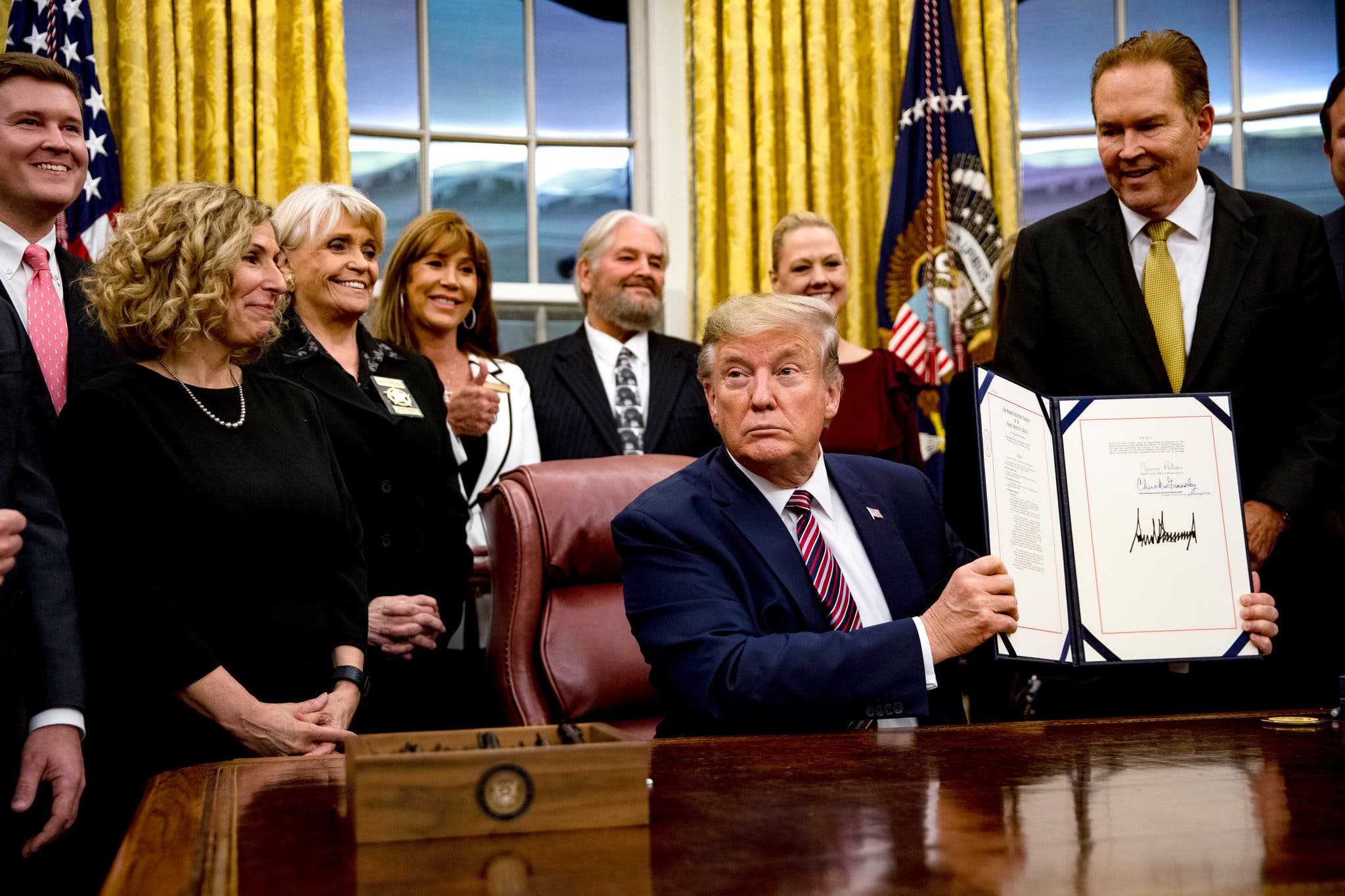In the realm of legislation concerning animal welfare, a noteworthy query has emerged: Did President Trump pass a law against animal cruelty? This inquiry not only addresses a pivotal topic in animal rights advocacy but also encapsulates the evolving landscape of legal protections afforded to animals in the United States. Exploring the timeline and implications of such legislation provides clarity and insight into ongoing efforts to combat cruelty.
The historical context of animal welfare laws in the U.S. reveals a mosaic of regulations, often piecemeal and fragmented. The Animal Welfare Act (AWA), originally enacted in 1966, serves as a foundational piece of legislation designed to ensure humane standards of care for certain animals bred for commercial sale, research, or exhibition. However, its coverage is limited, notably excluding many farm and wild animals. Over the decades, numerous amendments have been made, yet the framework remained largely unchanged until the latter part of the 20th century.
Fast forward to the 21st century, and the year 2019 proved to be a significant turning point. In late November of that year, President Trump signed into law the Preventing Animal Cruelty and Torture (PACT) Act, a momentous milestone in the legal fight against animal cruelty. This Act provided federal authorities with the tools necessary to prosecute individuals who engage in extreme acts of cruelty, such as animal fighting, and the crushing, burning, drowning, suffocating, or impaling of animals. With bipartisan support, the legislation represented a unifying voice against cruelty and an acknowledgment of the need for federal intervention.
The genesis of the PACT Act can be traced to longstanding advocacy efforts from animal rights organizations and concerned citizens. The legislation not only aimed to eradicate egregious acts of cruelty but also sought to bolster the legal framework by establishing comprehensive penalties. This included felony charges, emphasizing the severity of committing such acts. Yet, one might ponder: Is this law sufficient in the broader context of animal welfare?
The PACT Act is certainly a step forward, yet it raises essential questions regarding its implementation and enforcement. How can the law be practically applied, and what resources are allocated to ensure that it is enforced uniformly across the nation? These challenges underscore the complex nature of establishing a cohesive legal approach to animal protection. Moreover, the law does not supplant existing state regulations; instead, it enhances them, creating a patchwork of enforcement that can vary significantly from one jurisdiction to another.
Furthermore, the PACT Act’s narrow focus means that while it targets severe acts of cruelty, many other forms of abuse remain unaddressed at the federal level. For instance, issues related to factory farming practices, where animals endure inhumane living conditions, fall outside the scope of the PACT Act. The law also does not encompass everyday acts of neglect or broader systemic issues that plague animal welfare. This invites scrutiny of whether existing state laws provide adequate protections and how they interface with the new federal statute.
As the legal environment surrounding animal rights continues to evolve, it becomes increasingly clear that advocacy must extend beyond enacting laws. It involves fostering a cultural shift toward compassion for all living beings. Organizations and activists need to intensify their efforts to educate the public about the importance of humane treatment of animals, promoting practices that prevent cruelty in everyday situations. Mobilizing communities to advocate for more extensive legal protections is paramount in creating lasting change.
The PACT Act, while a significant advancement, demonstrates that the journey toward comprehensive animal welfare legislation is ongoing. The engagement of citizens in this dialogue is crucial. Advocates can leverage the momentum generated by recent legislative victories to lobby for broader reforms that encompass a more holistic approach to animal protection.
Moreover, there is a pressing need for a robust regulatory framework equipped to address the myriad forms of cruelty that animals face in modern society. This includes scrutinizing agricultural practices, wildlife conservation efforts, and the illegal pet trade. Each of these areas harbors unique challenges that demand legal attention and societal commitment. The interplay between law and ethics plays a decisive role in shaping a future where animals are perceived not merely as property but as sentient beings deserving of respect and care.
In conclusion, the passage of the PACT Act signifies a pivotal chapter in the legal history of animal welfare in the United States. While it marks a victory in the battle against extreme cruelty, it simultaneously poses broader questions about the adequacy and applicability of current laws across various contexts. The challenge lies not only in enforcing existing laws but also in inspiring a cultural transformation that prioritizes compassion and humane treatment of all beings. As citizens, advocates, and lawmakers come together in this fight, the vision for a future free from animal cruelty becomes an achievable reality.










